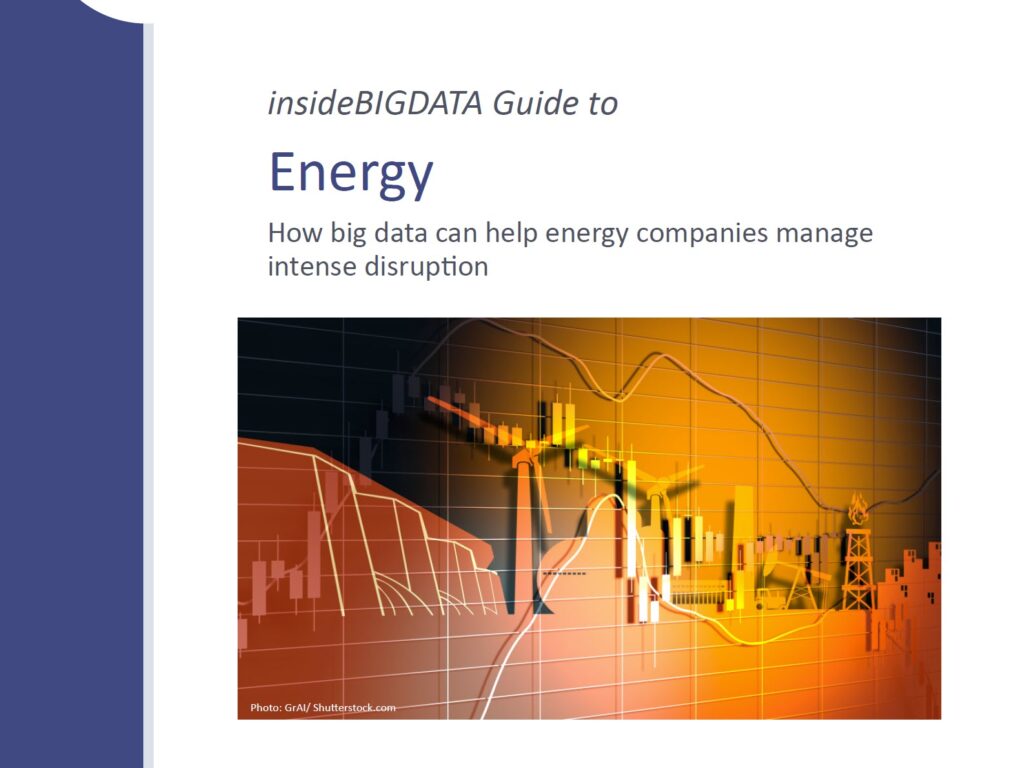This special technology guide from Dell Technologies and AMD will take a closer look at some of the biggest disruptors affecting energy companies, and also examine how big data analytics can help these firms reduce risk, drive down costs, and improve efficiency. The energy industry has always faced large price swings as a result of changes in the global economy. But today, this entire sector is facing an unprecedented level of disruption. Industry analysts say it is in the throes of a dramatic upheaval that is requiring companies in this industry to reinvent themselves.
insideBIGDATA Guide to Energy
This special technology guide from Dell Technologies and AMD will take a closer look at some of the biggest disruptors affecting energy companies, and also examine how big data analytics can help these firms reduce risk, drive down costs, and improve efficiency. The energy industry has always faced large price swings as a result of changes in the global economy. But today, this entire sector is facing an unprecedented level of disruption. Industry analysts say it is in the throes of a dramatic upheaval that is requiring companies in this industry to reinvent themselves.
insideBIGDATA Guide to Energy
This special technology guide from Dell Technologies and AMD will: take a closer look at some of the biggest disruptors affecting energy companies, and also examine how big data analytics can help these firms reduce risk, drive down costs, and improve efficiency.
Why AI Is the Answer to Oil Spills
In this contributed article, tech blogger Caleb Danziger discusses how AI may be the solution to preventing and responding to disasters like oil spills. AI can help prevent these disasters and improve responses if they do occur.
The Connected Well
The sorts of questions that oil and gas managers
need answers to is driving the need for ever more sophisticated analysis. Moving from descriptive analytics which answer the question “What happened?” to diagnostic analytics which address “Why did it happen?”. Once companies have that information, it would be natural to want to understand “When will
it happen again?” (predictive analytics). And finally, companies will also want to find out “What should happen?” (prescriptive analytics) in certain scenarios, so that they can get repeatable results.






